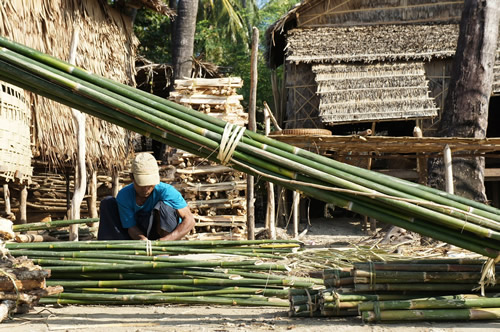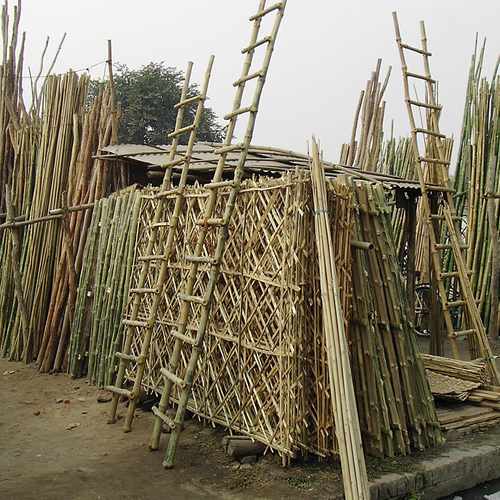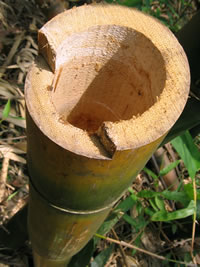- Home ›
- Bamboo Plants ›
- Harvesting
Bamboo Harvesting
Bamboo harvesting can take place every 3 to 5 years due to the high speed at which the plants grow.
When comparing that short period of bamboo growth to harvest, with a more than 25 year period for softwood trees and over 50 years for many of the hardwood species, bamboos have got to be considered as an excellent alternative to depletion of our forests.

These plants also thrive in a variety of climates across the world and are not restricted to growing in one country.
In many countries, particularly those with tropical climates, giant bamboos grow as forests.

Bamboo harvesting takes place at different ages of the plants growth according to the product requirements.
The harvested bamboos are useful for making different products at different ages, with many of these products and materials being covered throughout this site.
For example, the recommended age to harvest for products to use in the construction industry is 3-6 years yet for some craft uses they may be harvested at a younger age depending on the species.
To select culms that have the greatest strength for building purposes it is important that the culms are at the right age.
If the culms are older than 6 years they may have been subjected to insect damage on the interior of the plant but it will be difficult to assess.
When harvesting, it is best to cut just above the node at the base and to carry out the harvest immediately after new shoots have started to grow. At this time the plant will have given all it's starch to production of the new culms leaving less in the harvested culms.
To create special shapes or effects, bamboos can be bent or straightened through a process of heating and clamping until cool.
Building and construction makes use of the wide variety of building products now available made from this highly sustainable building material.
As wood becomes more and more scarce and valuable, bamboo harvesting will hold its own as a desired resource outside of the tropical climates where the benefits of its use have been known for centuries.
You only have to look at the wide variety of uses described across different sections of this web site to see how useful bamboos will become in the future outside of the countries that have known about these benefits for centuries. And I have only just touched the surface!
Environmentally Friendly

The leaf surface area of these plants is very high making it extremely efficient at removing carbon dioxide out of the atmosphere and having the resulting ability to generate oxygen in place of the carbon dioxide.
Bamboo harvesting falls into the environmentally friendly category because the plants grow quickly in comparison to hardwood trees and forests.
Increased concerns over depletion of our natural environment and resources has led to a movement to using highly renewable resources such as bamboos.